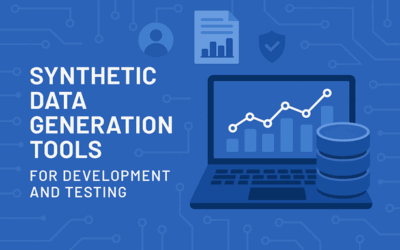
ITIL Deployment Management Explained
OCT, 2023
by Andrew Walker.
Author Andrew Walker
Andrew Walker is a software architect with 10+ years of experience. Andrew is passionate about his craft, and he loves using his skills to design enterprise solutions for Enov8, in the areas of IT Environments, Release & Data Management.
In today’s fast-paced digital landscape, where technology drives the heartbeat of businesses, the seamless deployment of IT services and changes has never been more critical. Enter ITIL Deployment Management, the unsung hero in the world of Information Technology Infrastructure Library (ITIL).
Enov8 Enterprise Release Manager
*Innovate with Enov8
Streamline delivery of IT change through embracing “Scaled Agile” best practice.
This powerful process is the linchpin that ensures your IT transformations are not just successful but also smooth and disruption-free.
What is ITIL Deployment Management?
ITIL, or the Information Technology Infrastructure Library, is a framework of best practices that has revolutionized IT service management across the globe. At its core lies the concept of ensuring that IT services align perfectly with business needs, fostering efficiency, reliability, and customer satisfaction.
ITIL Deployment Management, also known as Release and Deployment Management, is a pivotal process within ITIL. It’s the carefully orchestrated choreography of planning, scheduling, and executing the deployment of new or changed IT services and infrastructure components into a production environment.
Why is it so important?
Imagine your business as a well-oiled machine, with IT services as the gears and cogs that keep it running smoothly. Now, imagine introducing changes or updates to those gears while the machine is in full swing. If not handled with care, it could lead to catastrophic failures or downtime that can disrupt operations and tarnish your reputation.
This is where ITIL Deployment Management steps in. Its primary mission is to ensure that changes to your IT environment are introduced seamlessly, with minimal risk and disruption. It’s all about precision and timing, akin to a skilled surgeon performing a delicate operation on a patient.
Key Activities and Objectives
The process of ITIL Deployment Management encompasses several critical activities:
- Release Planning: Defining the scope and content of a release and developing a meticulous plan for its deployment.
- Release Build and Test: Ensuring that all changes have been rigorously tested and are ready for the production environment.
- Deployment Planning: Creating a comprehensive deployment plan that outlines every step of the process.
- Deployment Execution: The actual deployment, where changes are introduced into the production environment.
- Monitoring and Review: Keeping a watchful eye on the deployed changes to ensure they function as intended, and conducting post-implementation reviews for continuous improvement.
- Communication: Maintaining open and transparent communication with stakeholders to manage expectations and minimize disruptions.
- Documentation and Knowledge Management: Recording all processes, issues, and resolutions for future reference and learning.
- Risk Management: Identifying and managing potential risks associated with the deployment process.
Is ITIL Deployment the same as ITIL Release Management?
One question that often arises in the world of ITIL is whether Deployment Management and Release Management are one and the same. While they are closely related and share common objectives, there are distinctions to be made.
ITIL Release Management primarily focuses on the broader view of planning, designing, building, testing, and deploying releases. It encompasses both the technical aspects of creating releases (software or hardware) and the coordination of their deployment into production environments.
ITIL Deployment Management, on the other hand, zooms in on the nitty-gritty details of deploying changes and releases, across the lifecycle, and into the live production environment. It is a subset of Release Management, emphasizing the execution and control of the deployment process, ensuring that changes are introduced with minimal disruption.
In essence, Release Management is the strategic overseer of the entire release process, while Deployment Management is the tactical executor, ensuring that the release reaches its destination smoothly.
Both are essential cogs in the ITIL machinery, working in harmony to deliver successful IT changes.

Conclusion
In a world where technology is the lifeblood of business operations, ITIL Deployment Management emerges as a pivotal discipline. It’s the guardian of IT stability, the protector of business continuity, and the enabler of seamless transitions.
As we’ve explored in this introduction, ITIL Deployment Management is all about meticulous planning, precise execution, and constant vigilance. It ensures that your IT changes and releases not only meet the mark but also glide into production environments like a well-rehearsed ballet, without missing a beat.
Relevant Articles
7 Synthetic Data Generation Tools for Dev & Testing
In software development and testing, having access to high-quality, realistic data is crucial. But real production data is often sensitive, regulated, or simply unavailable for testing purposes. Synthetic data generation tools provide a powerful alternative, enabling...
The SAFe Hierarchy and Levels, Explained in Depth
The Scaled Agile Framework (SAFe) is a comprehensive set of principles and practices designed to help organizations adopt agile methods on an enterprise level. It provides a set of guidelines and best practices that enable large-scale product development with agility....
DORA Compliance – Why Data Resilience is the New Digital Battlefield
How Enov8 Helps Financial Institutions Align with the EU's Digital Operational Resilience Act Executive Introduction As of January 2025, the EU's Digital Operational Resilience Act (DORA) has become legally binding for financial institutions operating across the...
Data Fabric vs Data Mesh: Understanding the Differences
When evaluating modern data architecture strategies, two terms often come up: data fabric and data mesh. Both promise to help enterprises manage complex data environments more effectively, but they approach the problem in fundamentally different ways. So what’s...
What Is Release Management in ITIL? Guide and Best Practices
Managing enterprise software production at scale is no easy task. This is especially true in today’s complex and distributed environment where teams are spread out across multiple geographical areas. To maintain control over so many moving parts, IT leaders need to...
Test Environment: What It Is and Why You Need It
Software development is a complex process that requires meticulous attention to detail to ensure that the final product is reliable and of high quality. One of the most critical aspects of this process is testing, and having a dedicated test environment is essential...











